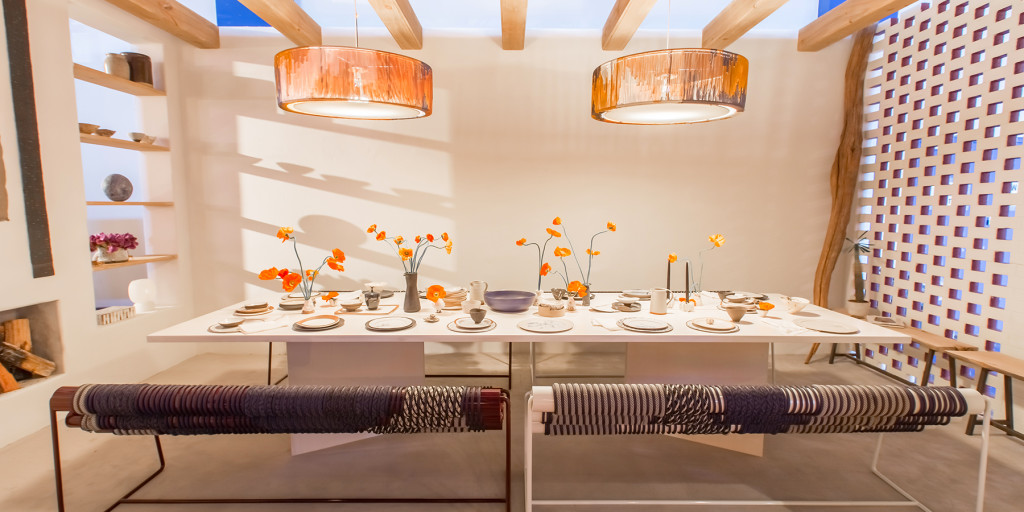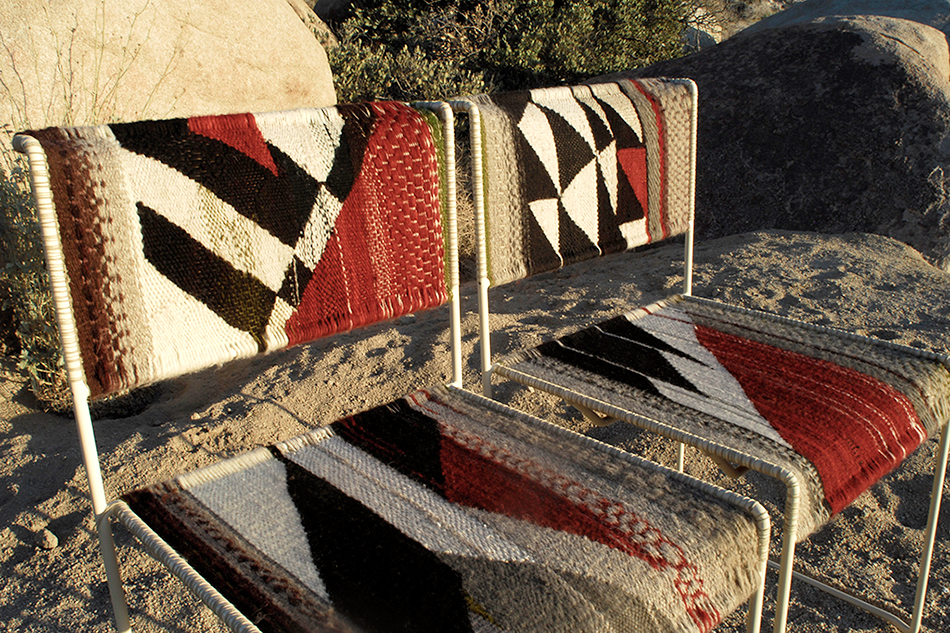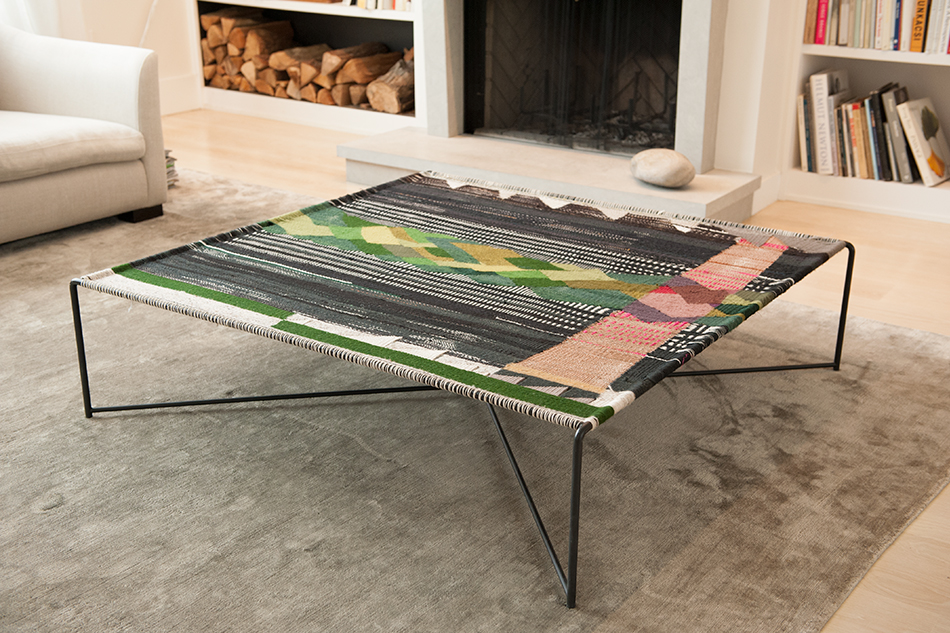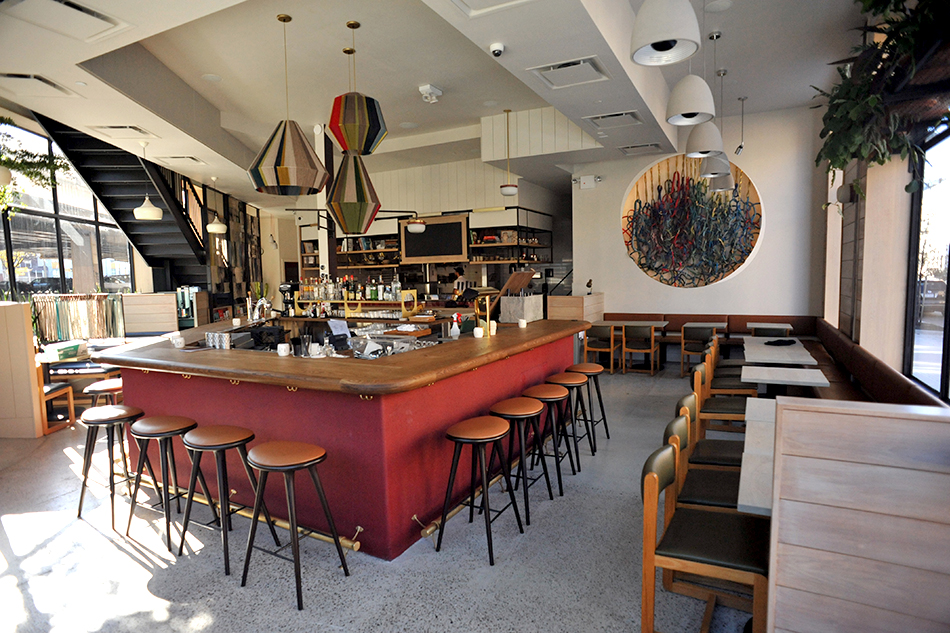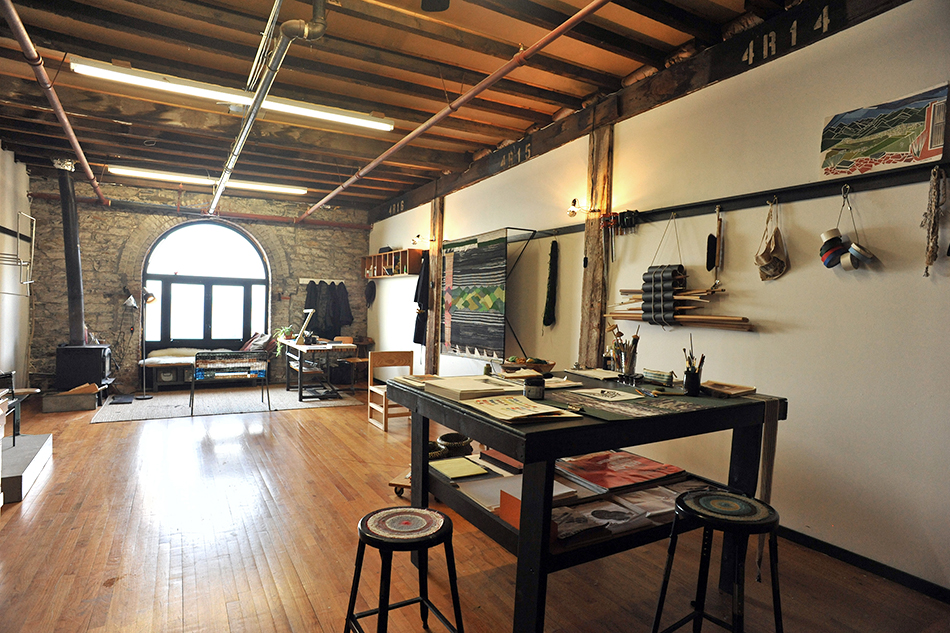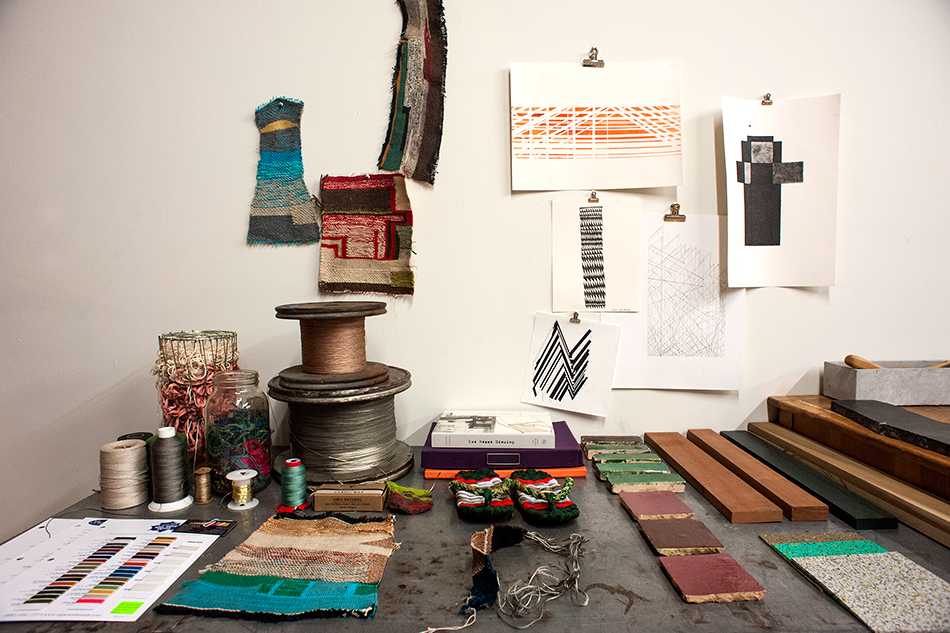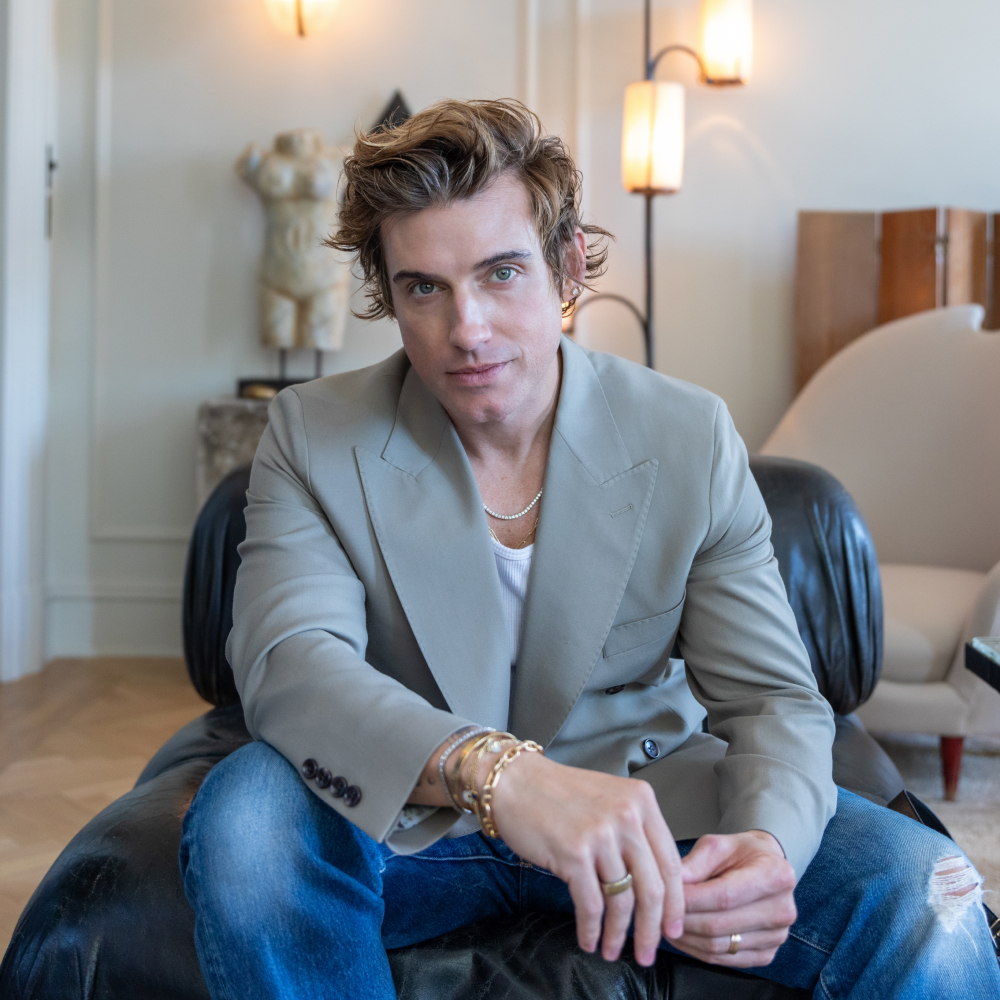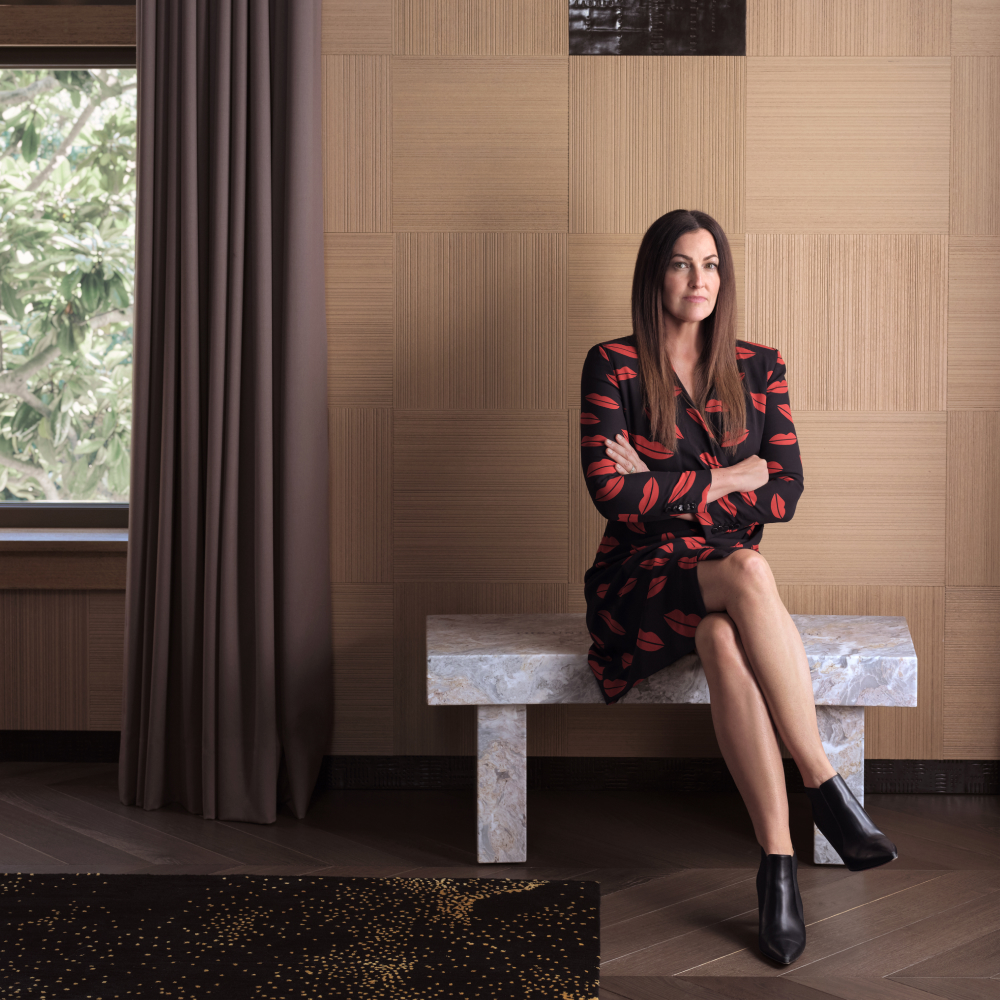
April 4, 2016When designing the 1stdibs table for the DIFFA Dining by Design event in New York, Betil Dagdelen wanted a space that was “earthy, raw, handmade, no rules.” Top: Alongside Dagdelen’s woven benches and pendant lights are personal items she collected during her travels, ceramics by Mondays and poppy arrangements by Karl Friedrich. Portrait by Erik Bardin; all photos courtesy of Cristina Grajales Gallery, unless otherwise noted
New York’s Dining by Design event is known for being a platform in which interior designers cordially try to outdo each other. For the charity gala, held late last month at Pier 92 on the Hudson River, more than 30 creators devised dinner tables and surrounding tableaux for their sponsors, raising nearly $800,000 toward the grant-making efforts of Design Industries Foundation Fighting AIDS, or DIFFA. This year’s offerings, by such talents as Alexandra Champalimaud, Bronson van Wyck and Madcap Cottage, were as spectacular as ever. Among the details on display were clashing floral fabrics, bunches of blue bananas used as light fixtures, electrified jellyfish, a wall of fog and a life-size spotted zebra statue that beckoned for selfies.
Betil Dagdelen, however, decided to go in a much subtler direction with her tablescape for 1stdibs, crafting a whitewashed refuge reminiscent of an adobe hut. “Earthy, raw, handmade, no rules” were the guidelines the artist set for herself. She says she was inspired by Georgia O’Keeffe’s New Mexico, indigenous Peruvian motifs and rural homes in her native Turkey. 1stdibs’ dinner guests said they saw glimmers of California, Tunisia and Morocco. The desert theme was lost on no one.
Beyond the structure’s arched entryway were naked timber beams spanning the ceiling, a latticed sidewall that cast tiny square shadows and a spare fireplace holding charred logs. Dagdelen topped built-in shelving and a 12-foot-long minimalist table with rustic vessels and dinnerware by the Brooklyn ceramics studio Mondays, while horticulture maven Karl Friedrich arranged sculptural bursts of orange poppies.
Adding to the ambience were “personal belongings and items I have collected through my travels,” says Dagdelen, who moved from Istanbul to New York in 2000 to work as a set designer. These objects included driftwood discovered on a tiny beach near her Brooklyn studio, a striped bird feather found in California’s Joshua Tree National Park and Palo Santo incense sticks from Peru, which lent the space a gentle aroma of perfumed pine.

Two of the four benches that Dagdelen built for her Dining by Design display, in white and burgundy aluminum wrapped in patterned textiles, offered by Cristina Grajales Gallery
But the real stars were Dagdelen’s hand-woven benches and pendant lights, which are now available through Cristina Grajales Gallery. The light fixtures have wide drum shades consisting of a network of thin vertical cords in desert-dawn tones of indigo, white, ocher and copper. The surprisingly comfortable benches are made from ropes of abstract textiles wrapped around painted aluminum pipes. These tubes gently roll along your body whenever your benchmate moves, resulting in an intimate massage effect.
Introspective checked in with Dagdelen soon after the DIFFA dinner.
1. What was your process for conceiving and executing the benches, lights and overall plan for the Dining by Design table?
I wanted to create a quiet room, taking New Yorkers away from the turmoil of their everyday lives. A touch of Aegean Turkey, a touch of New Mexico. When I stepped outside this room, I would see stretches of light-filled lands, adventurous creatures running wild and the silhouette of mountains in the distance. I kept the overall finishes very monochromatic and introduced patterns of shadow, with architectural details reflecting from sidewalls. Hand-woven pendant lamps brought in earthy sunset tones.
I did not want to visually crowd the room with 20 chairs, so I decided to build custom benches as seating. I used the inherent strength and flexibility of textiles to connect aluminum poles, allowing the structure to float without any welds and sculpt around the body. It’s fun to sit on.

To make the Loominaire light fixtures that adorn the Llama Inn, Dagdelen used a traditional Peruvian back-strap weaving technique, working with hand-spun llama wool, brass and iron.
2. You’ve done set design for magazines and music videos, such as Kanye West’s “Power.” Can you tell me a little about your production work and how it relates to your current practice?
I have been a production designer for more than 12 years and began my career working in wood shops for Broadway shows. It was a great way to learn how to build things and get a chance to work with different types of materials. Each project requires intense studying. You become an expert on the subject by the time the project ends.
There’s not much room for hesitation, so I learned to make fast decisions and stand by them to be able to create environments in a matter of hours. “Done is beautiful” is a quote I use a lot. I had very limited time to put all elements of the DIFFA booth design together, so my skills and experience came in handy.
Ha! The Kanye West video! He did not like it one bit when I mispronounced his name and asked the producer, “Which one is Kanya?”
3. How did weaving and furniture become your chosen art forms?
I studied political science and international relations in Istanbul, at Koç University, for my bachelor’s degree. But it was clear to me and to the rest of the world that I wasn’t going to be a diplomat. So I began working as an art director at advertising firms — BBDO and Publicis Istanbul — during school. I attended Parsons School of Design for architectural studies after moving to New York, in 2000.
I am a self-taught weaver, mostly from old illustrated books, trial-and-error and lots of traveling. In the last few years, I have been visiting different weaving communities — in New Mexico, Peru and my native country, Turkey — to learn about their techniques of weaving and collecting hand-dyed yarn.

For her Reeves chair, the designer upcycled the wrought-iron frame of a Van Keppel-Green piece from ca. 1950, replacing the original wicker with woven Churro wool, cotton warp and hemp.
I began adapting all these different methods to develop my own process, as I do not use looms when I weave. I always use the frame of the furniture as my loom, which eliminates the tension control, something very important for weaving. This is what gives the uniqueness to my pieces.
4. What do weaving and patterns mean to you? Are they biographical at all?
I came to weaving through a personal mission to understand patterns — the patterns we make in our everyday lives, in our living spaces and in society at large. But most importantly, figuring out how to break these patterns harmoniously has been my ambition. By its very nature, weaving is a very repetitive practice, where deviations are obvious and highly visible. This makes it a perfect medium for me, as well as a platform to build on. My work introduces non-repeating patterns into habitual spaces.
5. What’s next? What projects are you working on now?
A woven daybed! But before I begin anything new, I am headed to California for a little desert time to get color inspirations and enjoy the spring blooms.
